Below you will find examples of recently completed projects showcasing our work in evaluation, cost-effectiveness, and market characterization
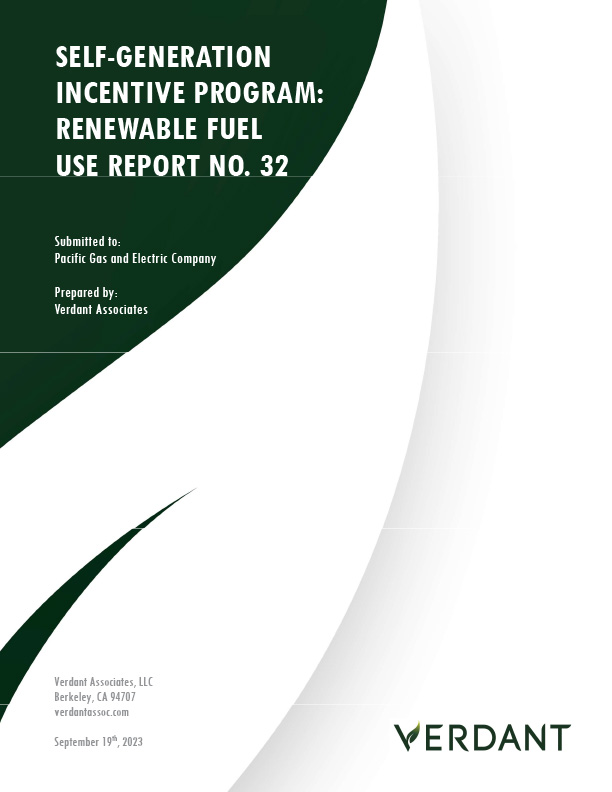
SGIP Renewable Fuel Use Report No. 32
This report summarizes renewable fuel use by SGIP generation projects for the 12-month period ending June 2023. Metrics include renewable fuel use percentage and greenhouse gas emissions impacts.
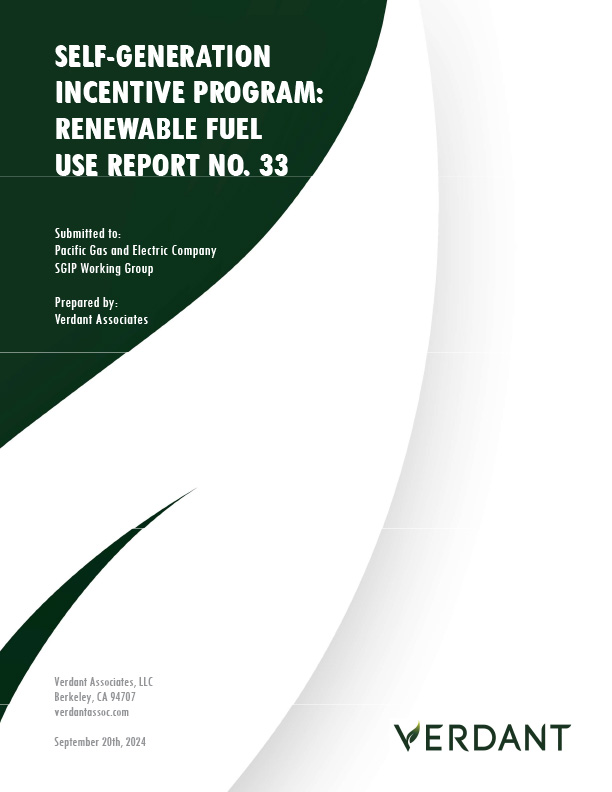
SGIP Renewable Fuel Use Report No. 33
This report summarizes renewable fuel use by SGIP generation projects for the 12-month period ending June 2024. Metrics include renewable fuel use percentage and greenhouse gas emissions impacts.

Webinar: Energy Storage for Greenhouse Gas Emissions Reduction
This webinar, featuring Verdant Principal Brian McAuley, was a presentation of the Energy Storage Technology Advancement Partnership (ESTAP) on two different state approaches to reducing emissions with energy storage. View the webinar recording here.
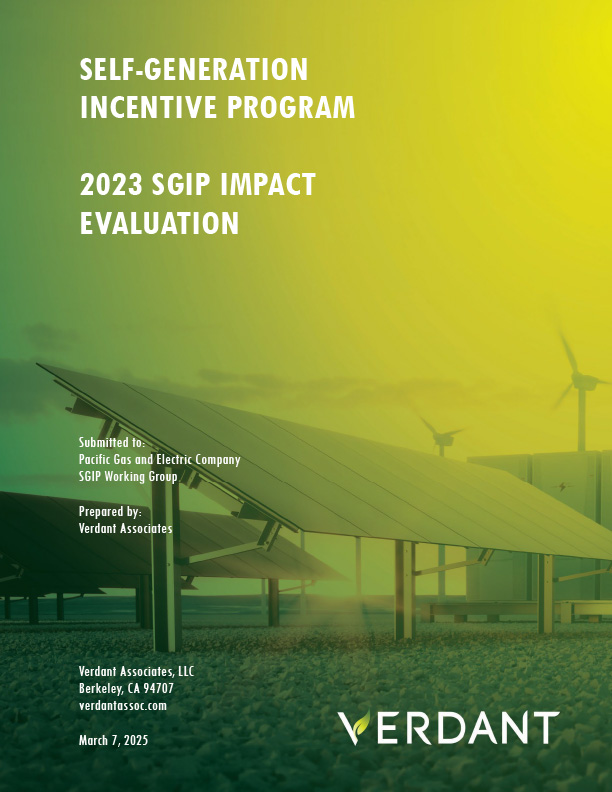
2023 SGIP Impact Evaluation
The 2023 SGIP Impact Evaluation Report examines the impact of tens of thousands of solar and storage and customer generation systems on customer bills, utility costs, environmental emissions, and resiliency benefits. We examine DER participation in VPPs for emergency reliability and model the maximum benefits possible using optimal dispatch of battery storage.
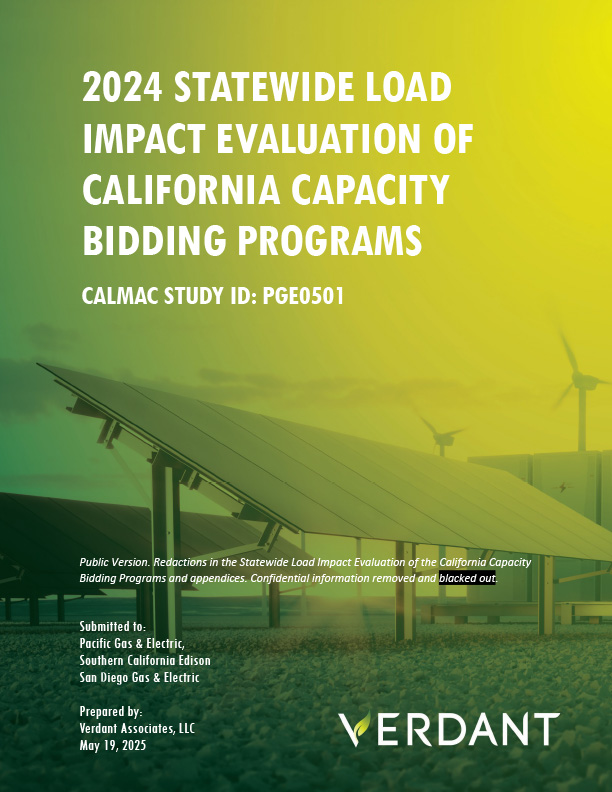
2024 Statewide Load Impact Evaluation of California Capacity Bidding Programs
This report presents the statewide load impact evaluation of the Capacity Bidding Program (CBP) for the 2024 program year. The report covers the statewide CBP offered by three California investor owned utilities: PG&E, SCE, and SDG&E.
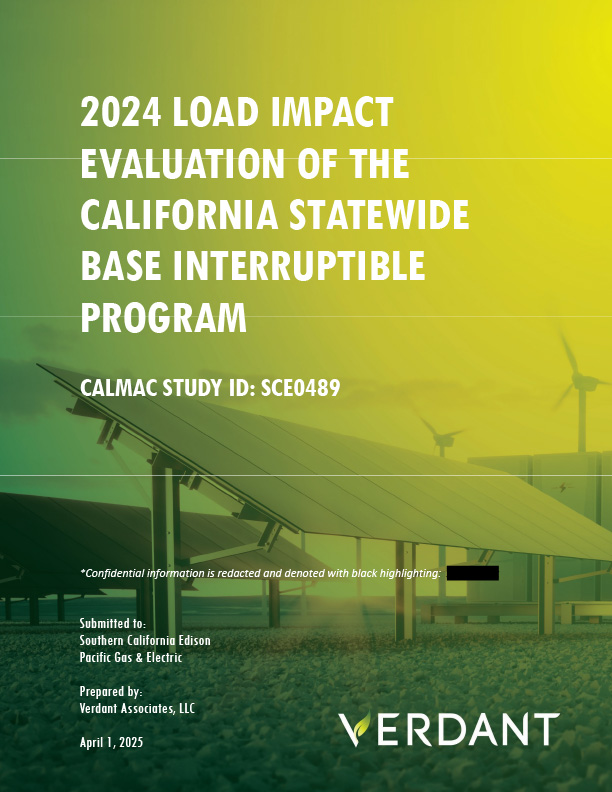
2024 Load Impact Evaluation of the California Statewide Base Interruptible Program
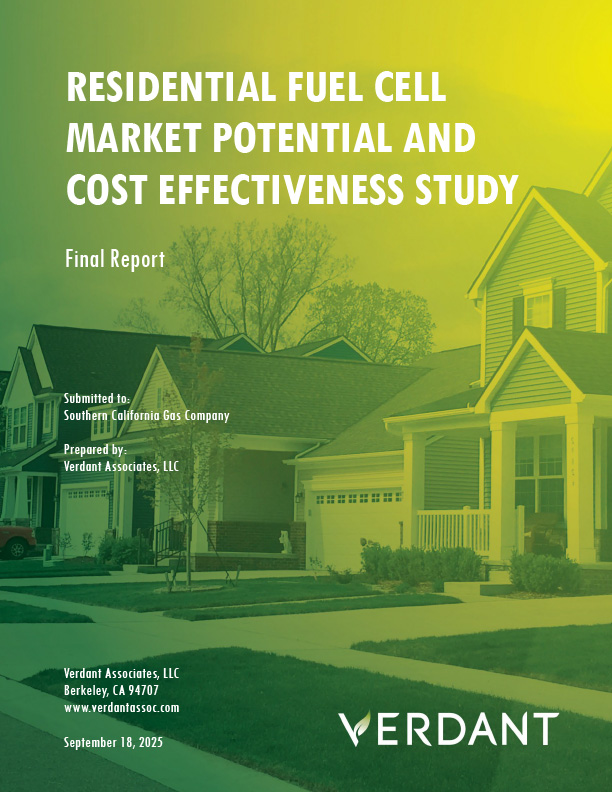
Residential Fuel Cell Market Potential and Cost Effectiveness Study

IEPEC 2025: Powering Down Debt: A Meta-Analysis of Personalized Case Management Programs Tackling the Affordability Crisis

IEPEC 2025: Batteries Unleashed: Supercharging Benefits Through Smarter Storage Programs

IEPEC 2025: Not Your Grandma’s Water Heater: Customers’ Take on Load-Shifting Technology

IEPEC 2025: The Utility Bill Speedbump on the Road to a Carbon Free Future

IEPEC 2025: Hot Zones, Cool Homes: Rethinking Building Efficiency in a Warming Climate

ACEEE 2022: Estimating Energy and Greenhouse Gas Impacts in All-Electric Residential New Construction
This paper presents the methodology and results from an evaluation of Sacramento Municipal Utility District’s (SMUD) All-Electric Smart Homes Program, which incentivizes home builders to construct all-electric and all-electric-ready homes to take greater advantage of the renewable energy economy and reduce greenhouse gas emissions.

Residential Battery Storage Identification in High Fire Threat Districts and Disadvantaged Communities
This paper, presented at the 2024 ACEEE Summer Study, demonstrates how machine learning approaches can be applied to AMI data to identify the operating mode of battery storage systems in the absence of device-level telemetry.

2021-2022 SGIP Impact Evaluation
The 2021-2022 SGIP Impact Evaluation Report examines the impact of tens of thousands of solar and storage systems on customer bills, utility costs, environmental emissions, and resiliency benefits. We examine DER participation in VPPs for emergency reliability and model the maximum benefits possible using optimal dispatch of battery storage.

Estimating Energy and Greenhouse Gas Impacts in All-Electric Residential New Construction
This paper presents the methodology and results from an evaluation of Sacramento Municipal Utility District’s (SMUD) All-Electric Smart Homes Program, which incentivizes home builders to construct all-electric and all-electric-ready homes to take greater advantage of the renewable energy economy and reduce greenhouse gas emissions.
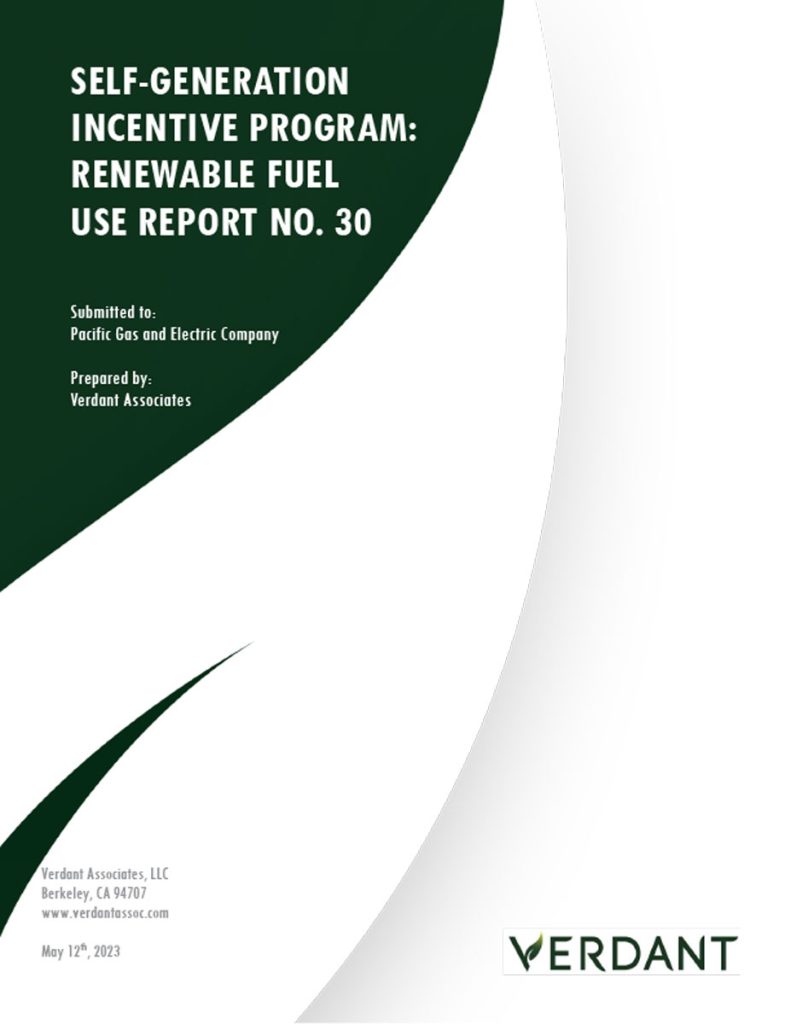
SGIP Renewable Fuel Use Report No. 30
This report summarizes renewable fuel use by SGIP generation projects for the 12-month period ending June 2021. Metrics include renewable fuel use percentage and greenhouse gas emissions impacts.
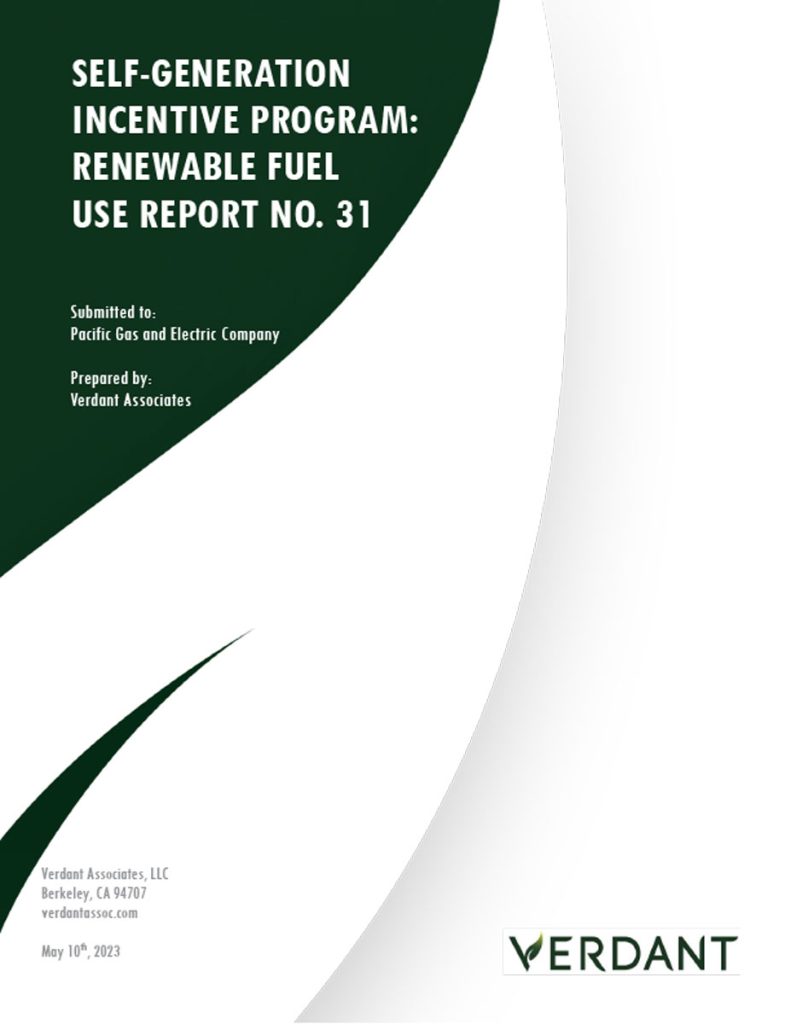
SGIP Renewable Fuel Use Report No. 31
This report summarizes renewable fuel use by SGIP generation projects for the 12-month period ending June 2022. Metrics include renewable fuel use percentage and greenhouse gas emissions impacts.
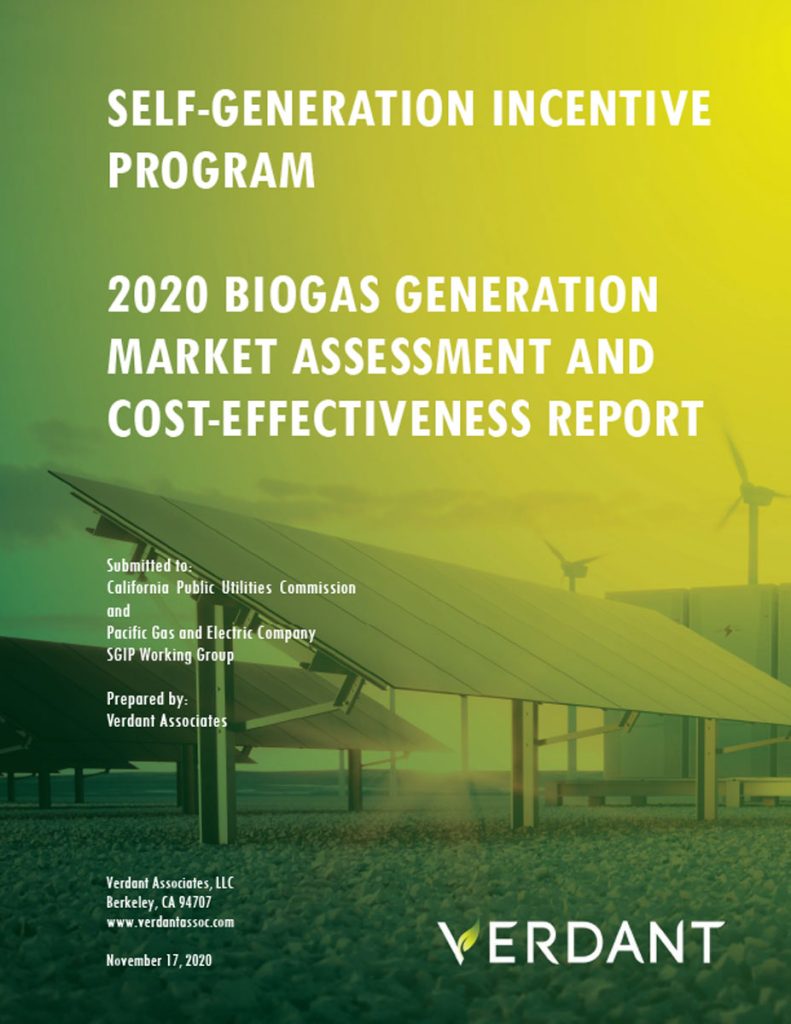
SGIP 2020 Biogas Generation Market Assessment and Cost-Effectiveness Report
This report provides a comprehensive assessment of the state of the California market for biogas generation technologies. The report also includes a detailed cost-effectiveness analysis of behind-the-meter generation technologies fueled by renewable biogas.
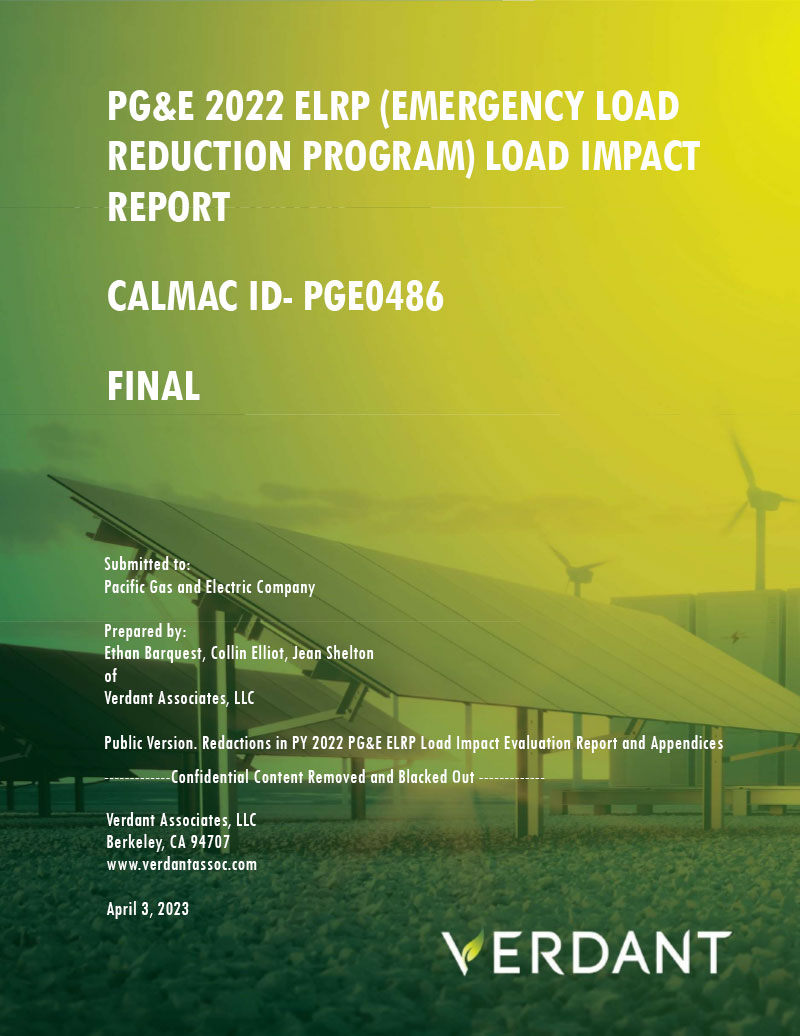
PG&E 2022 Emergency Load Reduction Program Load Impact Evaluation
Load impact study for PG&E’s 2022 ELRP demand response program designed to access emergency load reduction during times of grid stress (redacted for confidentiality).
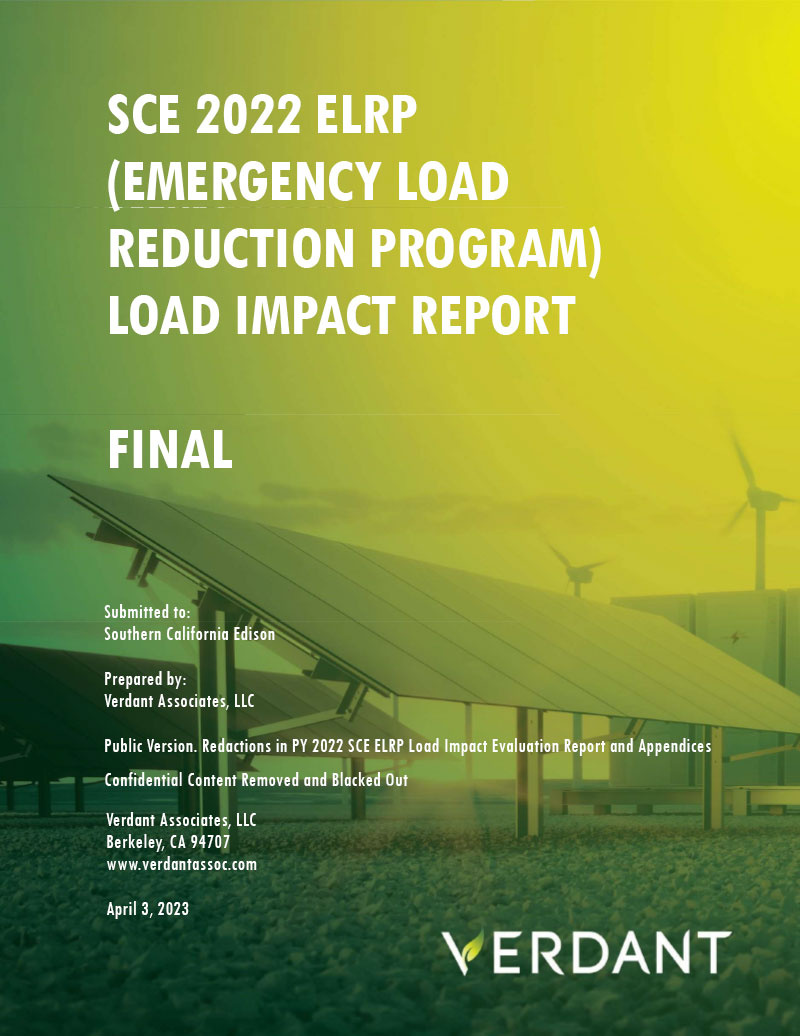
SCE 2022 Emergency Load Reduction Program Load Impact Evaluation
Load impact study for SCE’s 2022 ELRP demand response program designed to access emergency load reduction during times of grid stress (redacted for confidentiality).

IEPEC 2022: Renewable Natural Gas – hope or hype?
This paper presents findings from a cost-effectiveness analysis of an RNG standard for the country’s largest gas utility and a California statewide market characterization and cost-effectiveness analysis of renewable natural gas for on-site generation. Presented by Ben Cheah at IEPEC 2022 in San Diego, CA.

IEPEC 2022: What is the Residential Value of Resiliency?
This paper quantified the gap between a customer’s purchase price and the incremental bill savings from energy storage and used the difference between the two as the shadow price of resiliency or value of lost load VLL. Presented by Jean Shelton at IEPEC 2022 in San Diego, CA.

IEPEC 2022: Survival of Behind the Meter Generation Projects
This paper uses sub-metered data to estimate technology specific survival curves to assess the share of distributed generation projects that will remain operational in future years, identify characteristics that increase the likelihood of decommissioning, and develop estimates of future available capacity. Presented by Ethan Barquest at IEPEC 2022 in San Diego, CA.

IEPEC 2022: Residential Solar and Changes in Consumption of Electricity
This paper summarizes the methodology and results from analysis to assess whether residential customers with solar panels exhibit any increase in gross energy consumption in the year following installation of photovoltaic systems. Presented by Collin Elliot at IEPEC 2022 in San Diego, CA.

IEPEC 2022: Are California’s Net Metering Tariffs Fair, and How Can We Avoid a Cost-Shift?
This paper explores the results of a cost-effectiveness and cost of service evaluation of California’s NEM tariff (“NEM 2.0”). Presented by William Marin at IEPEC 2022 in San Diego, CA.

IEPEC 2022: How Do Households with Solar + Storage Bridge the Gap Throughout PSPS Events
This paper goes behind-the-meter and examines how energy storage and energy storage paired with on-site solar generation were utilized by customers who lost power in response to PSPS events in 2019. Presented by Brian McAuley at IEPEC 2022 in San Diego, CA.

PG&E Financial Assistance Pilot Evaluation
This process evaluation assessed the effectiveness of a PG&E program that issued upfront incentives to project developers to encourage adoption of storage in disadvantaged communities.
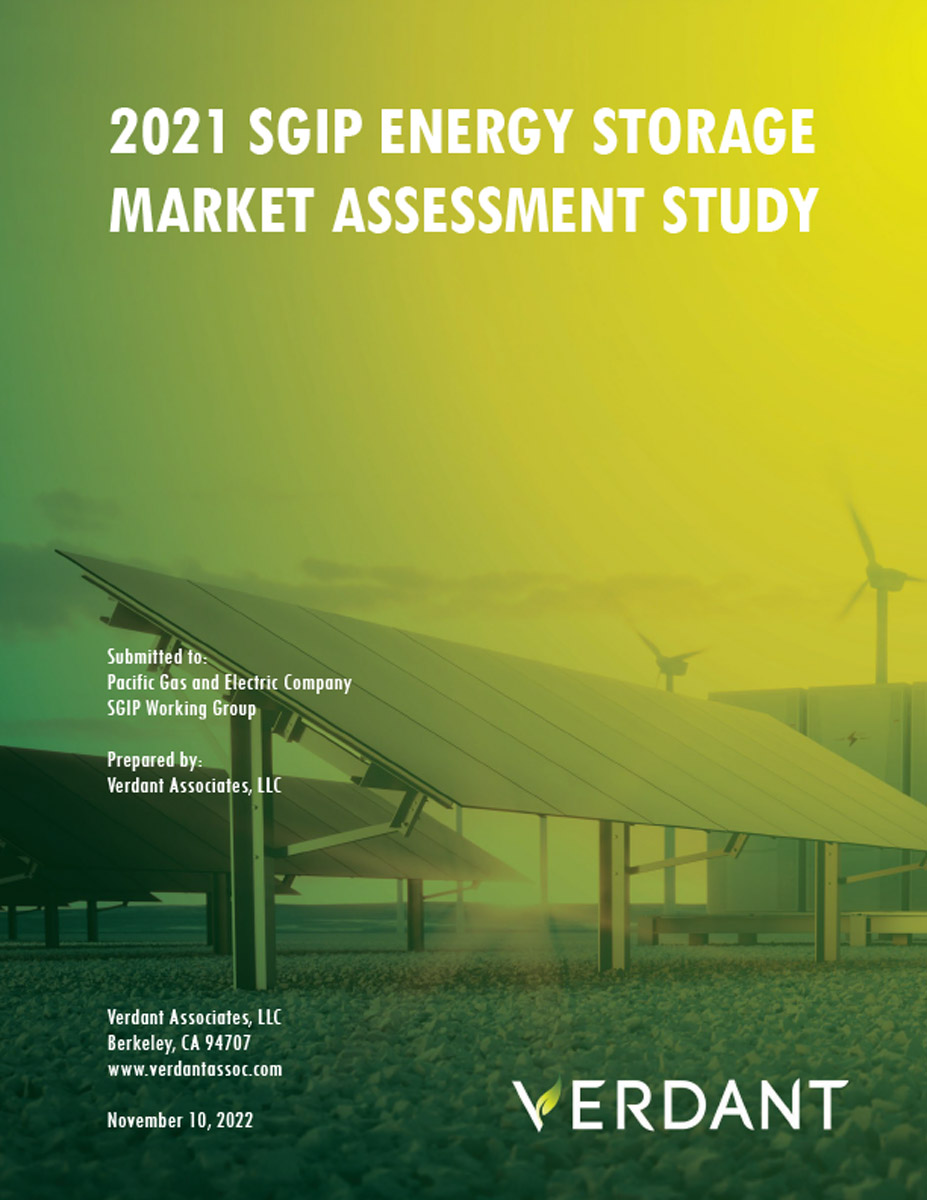
2021 SGIP Energy Storage Market Assessment Study
This study is an evaluation of the market for behind-the-meter (BTM) energy storage and how that market interacts with and is influenced by ratepayer funded programs like the Self-Generation Incentive Program (SGIP).

Renewable Natural Gas in California
This report presents a snapshot of renewable natural gas in California, including the sources of renewable natural gas within California, estimates of potential production, carbon intensities for different sources, federal and state incentive programs, and federal and state policies that may affect the future of renewable natural gas within California.
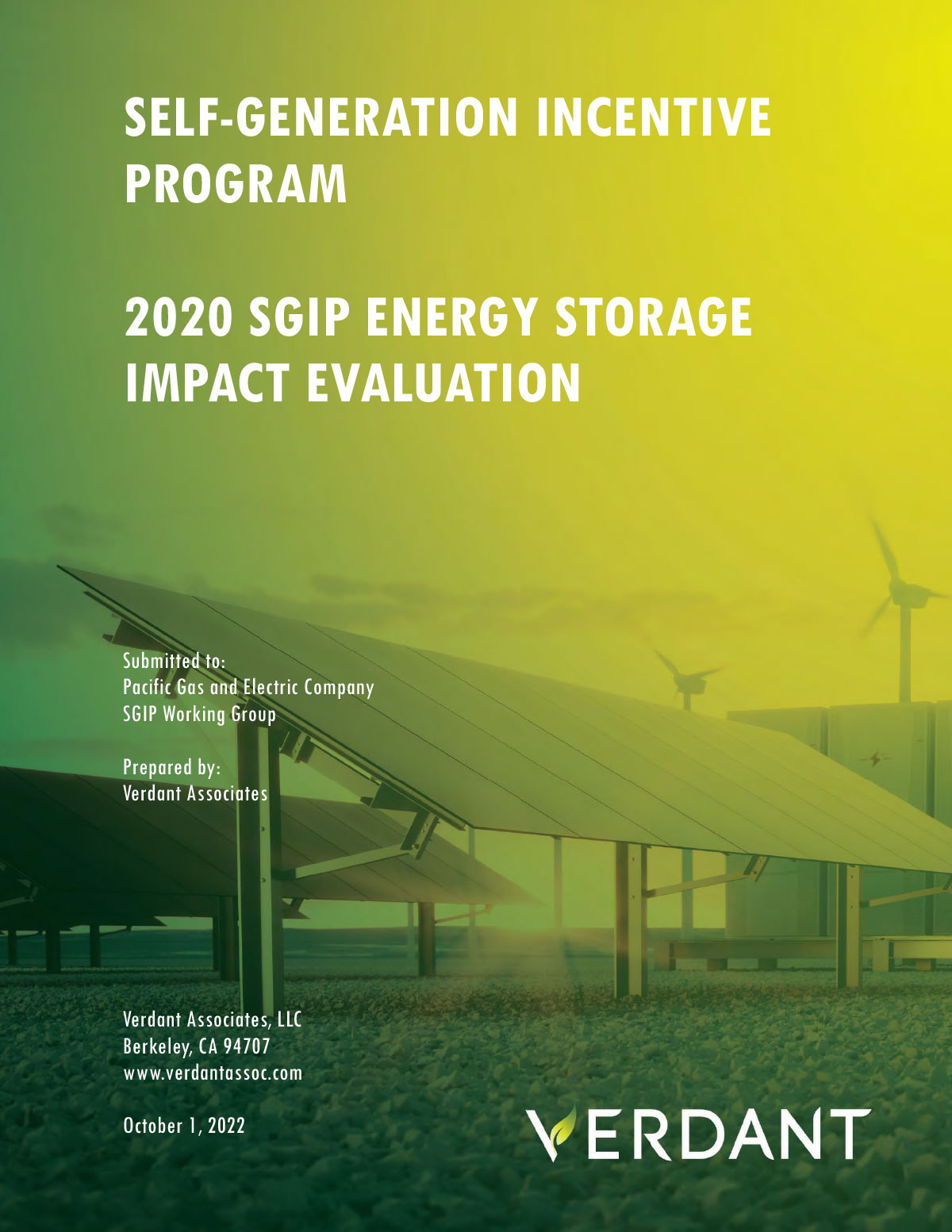
2020 SGIP Energy Storage Impact Evaluation
The Self-Generation Incentive Program (SGIP) was established in 2001 and provides financial incentives for the installation of behind-the-meter (BTM) distributed generation and energy storage technologies that meet all or a portion of a customer’s electricity needs.
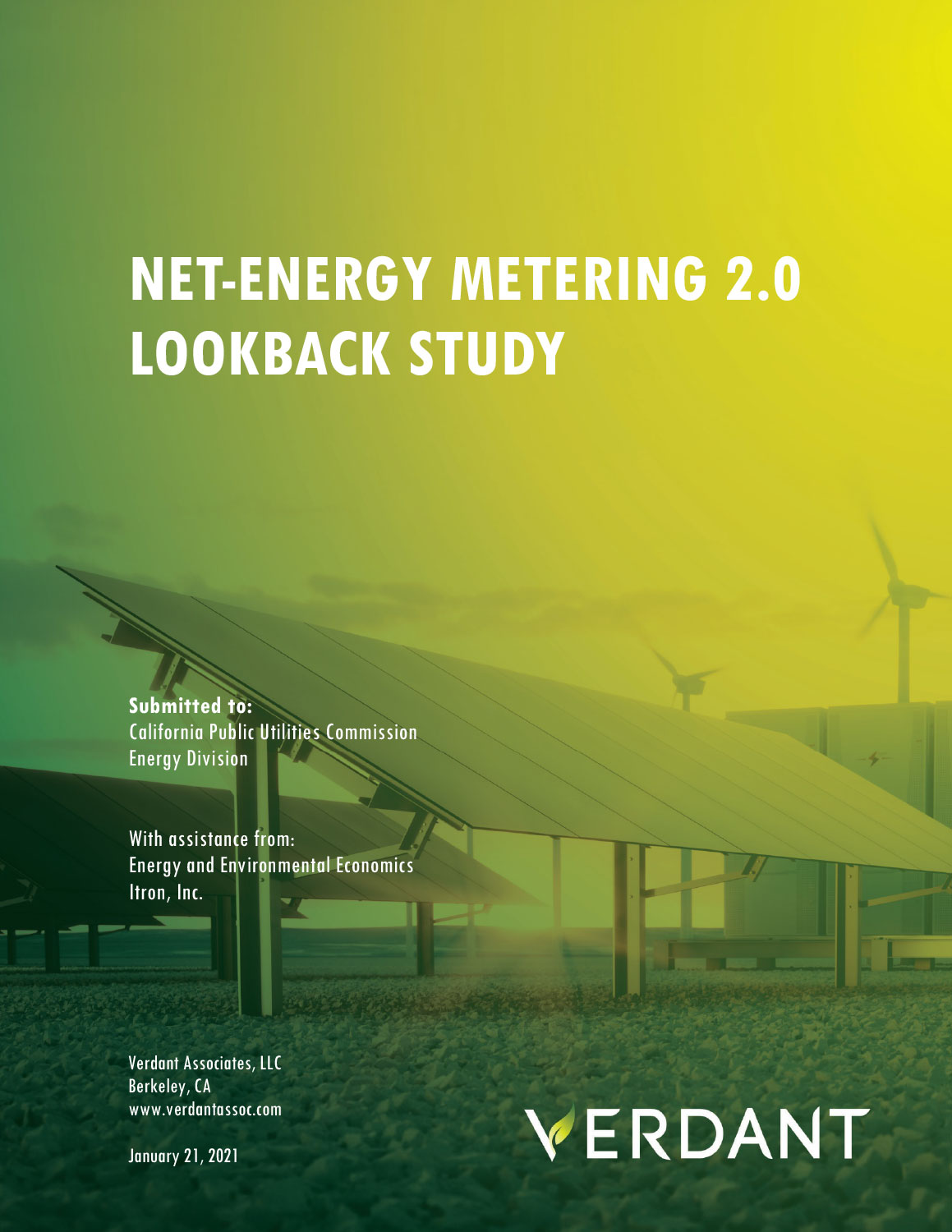
California Net-Energy Metering 2.0 Lookback Study
Quantifies the cost-effectiveness and cost of service impacts of hundreds of thousands of DERs taking service under California’s NEM 2.0 tariff and sets the stage for the NEM successor tariff revisit.
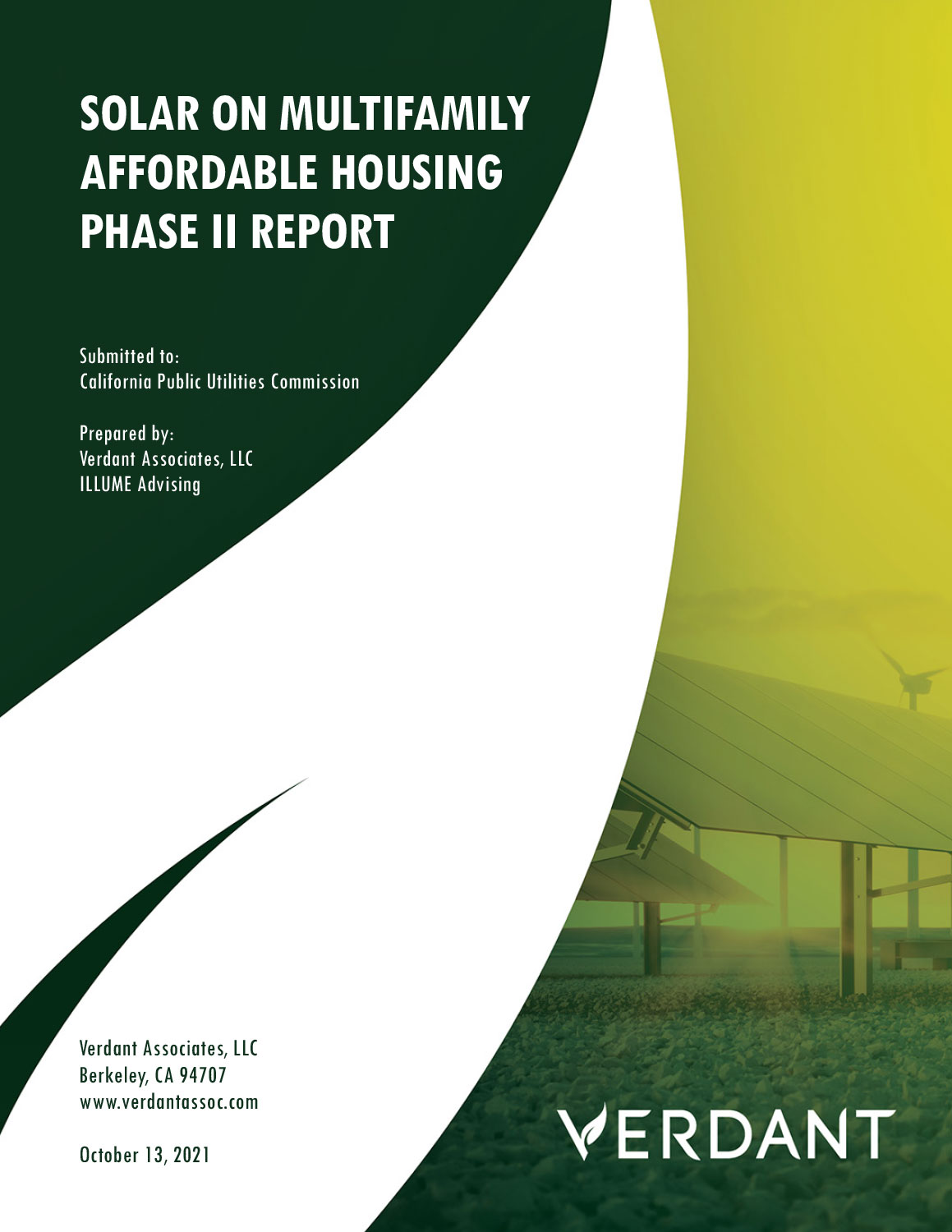
2021 SOMAH Phase II Evaluation Report
The inaugural process and impact evaluation of California’s Solar on Multifamily Affordable Solar Homes Program.
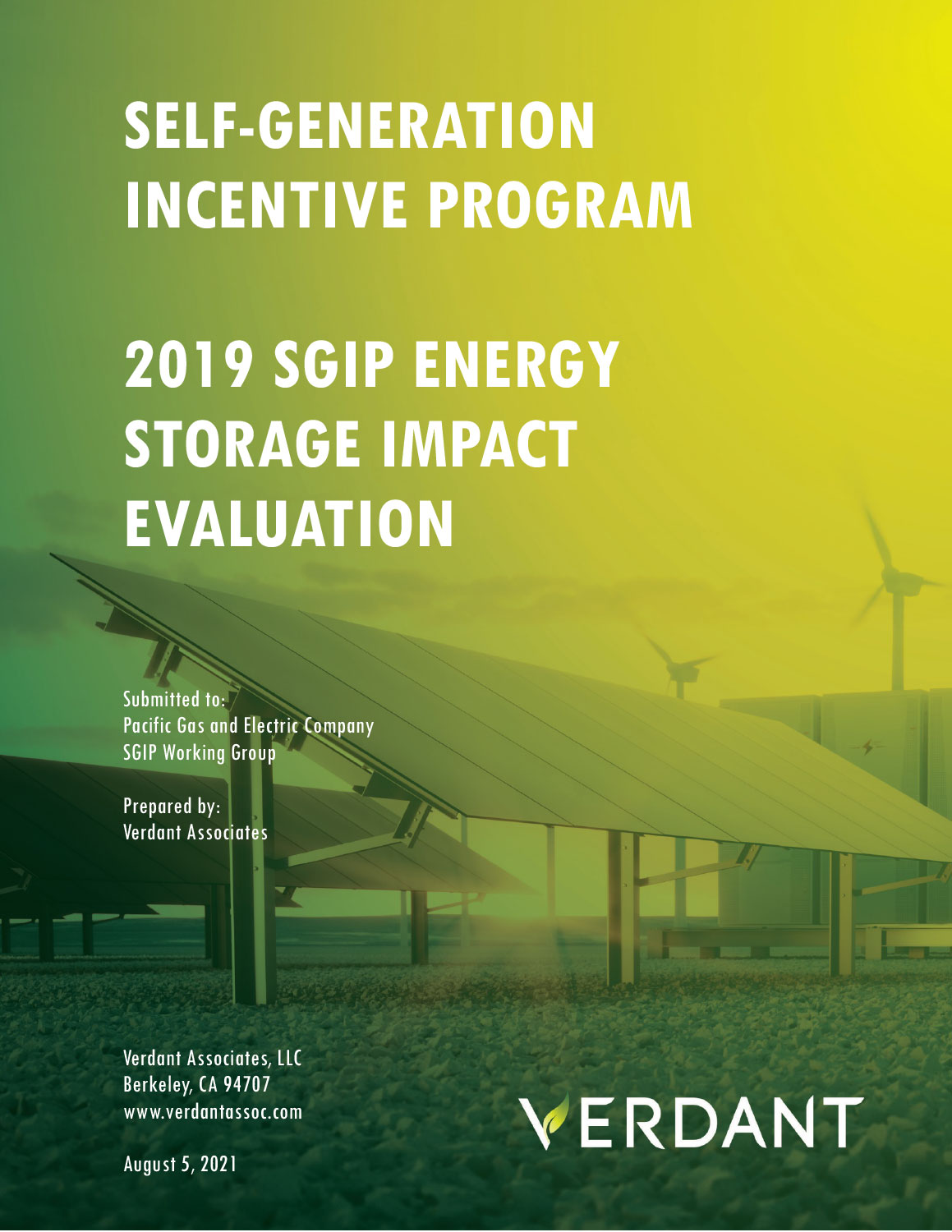
2019 SGIP Energy Storage Impact Evaluation
Quantifies the energy, environmental, and peak demand impacts of thousands of behind-the-meter battery storage systems rebated by the Self-Generation Incentive Program.
At Verdant Associates, our people are our strength.
We are economists, data scientists, engineers, and social scientists. But more importantly, we are bikers, swimmers, skiers, hikers, and parents. We seek to leave the world a better place than when we found it by working tirelessly to solve the pressing climate change issues that will define this generation.
